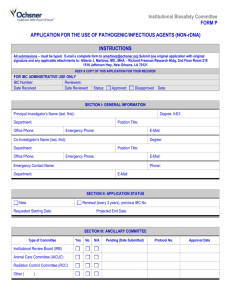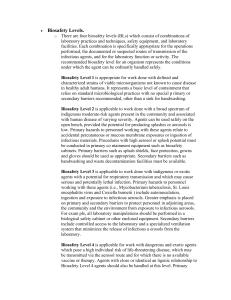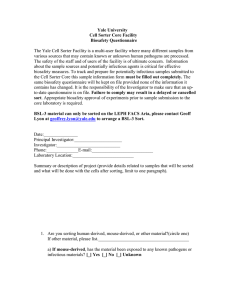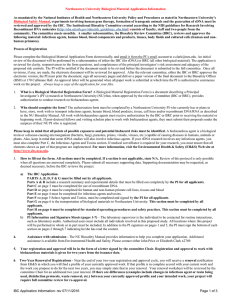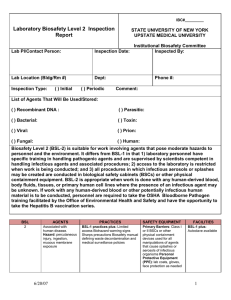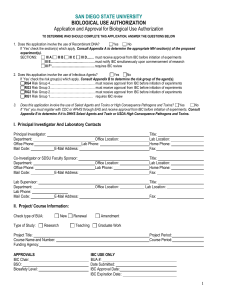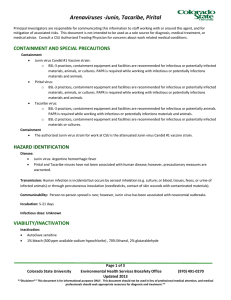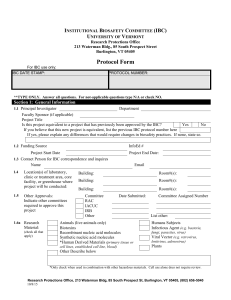General Recommendations
advertisement
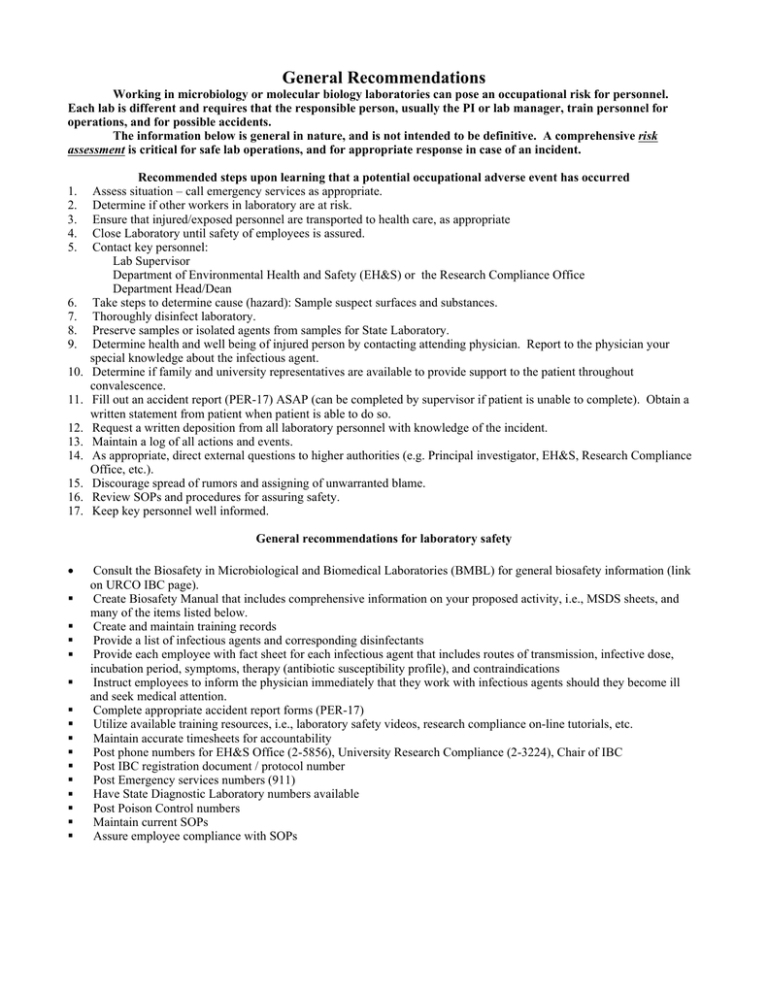
General Recommendations Working in microbiology or molecular biology laboratories can pose an occupational risk for personnel. Each lab is different and requires that the responsible person, usually the PI or lab manager, train personnel for operations, and for possible accidents. The information below is general in nature, and is not intended to be definitive. A comprehensive risk assessment is critical for safe lab operations, and for appropriate response in case of an incident. 1. 2. 3. 4. 5. 6. 7. 8. 9. 10. 11. 12. 13. 14. 15. 16. 17. Recommended steps upon learning that a potential occupational adverse event has occurred Assess situation – call emergency services as appropriate. Determine if other workers in laboratory are at risk. Ensure that injured/exposed personnel are transported to health care, as appropriate Close Laboratory until safety of employees is assured. Contact key personnel: Lab Supervisor Department of Environmental Health and Safety (EH&S) or the Research Compliance Office Department Head/Dean Take steps to determine cause (hazard): Sample suspect surfaces and substances. Thoroughly disinfect laboratory. Preserve samples or isolated agents from samples for State Laboratory. Determine health and well being of injured person by contacting attending physician. Report to the physician your special knowledge about the infectious agent. Determine if family and university representatives are available to provide support to the patient throughout convalescence. Fill out an accident report (PER-17) ASAP (can be completed by supervisor if patient is unable to complete). Obtain a written statement from patient when patient is able to do so. Request a written deposition from all laboratory personnel with knowledge of the incident. Maintain a log of all actions and events. As appropriate, direct external questions to higher authorities (e.g. Principal investigator, EH&S, Research Compliance Office, etc.). Discourage spread of rumors and assigning of unwarranted blame. Review SOPs and procedures for assuring safety. Keep key personnel well informed. General recommendations for laboratory safety • Consult the Biosafety in Microbiological and Biomedical Laboratories (BMBL) for general biosafety information (link on URCO IBC page). Create Biosafety Manual that includes comprehensive information on your proposed activity, i.e., MSDS sheets, and many of the items listed below. Create and maintain training records Provide a list of infectious agents and corresponding disinfectants Provide each employee with fact sheet for each infectious agent that includes routes of transmission, infective dose, incubation period, symptoms, therapy (antibiotic susceptibility profile), and contraindications Instruct employees to inform the physician immediately that they work with infectious agents should they become ill and seek medical attention. Complete appropriate accident report forms (PER-17) Utilize available training resources, i.e., laboratory safety videos, research compliance on-line tutorials, etc. Maintain accurate timesheets for accountability Post phone numbers for EH&S Office (2-5856), University Research Compliance (2-3224), Chair of IBC Post IBC registration document / protocol number Post Emergency services numbers (911) Have State Diagnostic Laboratory numbers available Post Poison Control numbers Maintain current SOPs Assure employee compliance with SOPs

